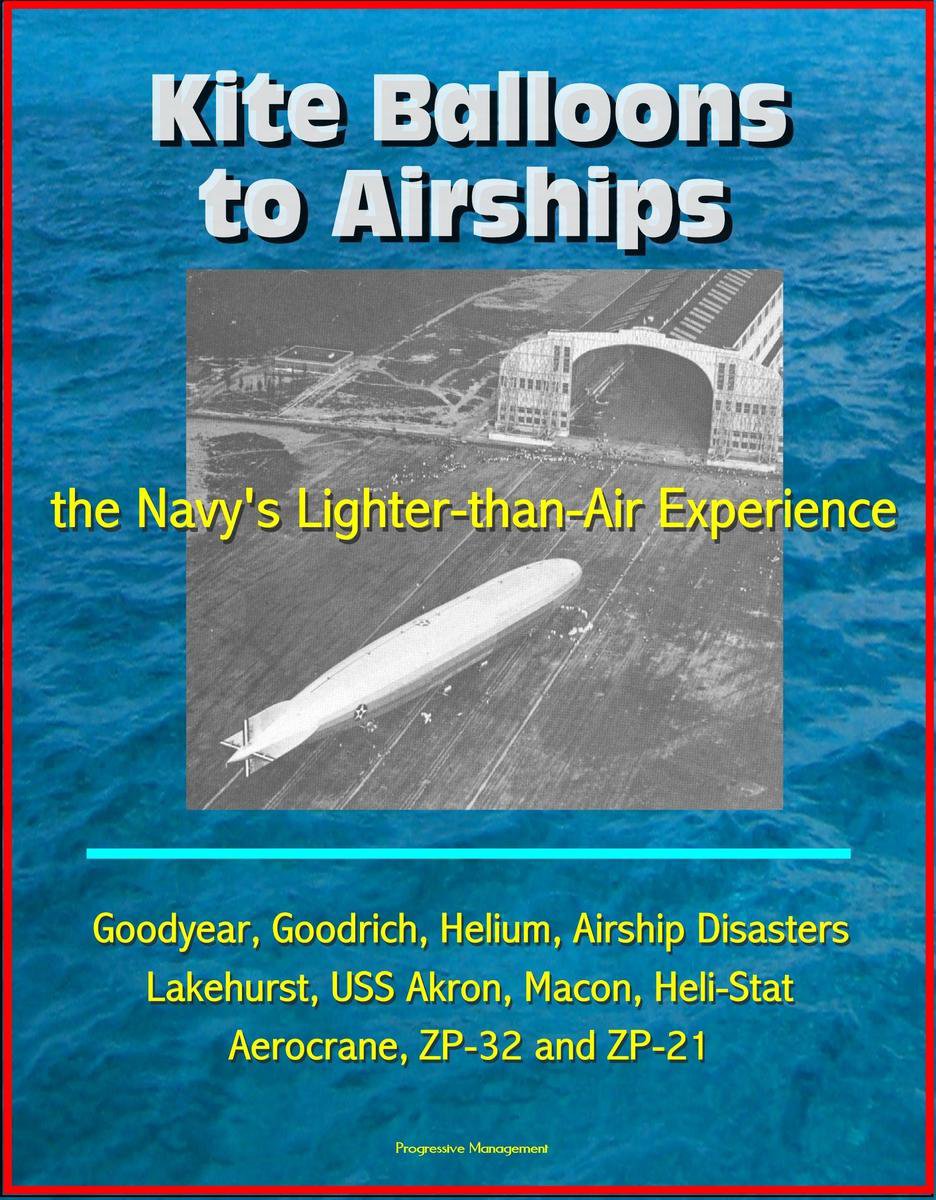Kite Balloons to Airships: the Navy's Lighter-than-Air Experience - Goodyear, Goodrich, Helium, Airship Disasters, Lakehurst, USS Akron, Macon, Heli-Stat, Aerocrane, ZP-32 and ZP-21
The dawn of aviation began with lighter-than-air craft and gliders. They were in the forefront of what eventually led to the Wright brothers' activities at Kitty Hawk. The Navy's early use of lighter-than-air craft may be traced back to the American Civil War. However, it was a short-lived affair and these LTA possibilities were not pursued after the war. With the advent of airplanes in naval service, the Navy again turned its interest to lighter-than-air craft. The Navy's lighter-than-air program blossomed and its fleet of airships became the largest the world has ever seen. During the era of the giant rigid airships, the Navy built some of the largest airships in the world. Many achievements were recorded by the Navy's LTA branch and new records were set, records which still remain unbroken today. This monograph is intended to provide an overview of the Navy's involvement with balloons, airships and their operations, which shows their failures and accomplishments and their contributions to the Navy's mission of guarding the sea lanes of America. It provides an overall look at the history of LTA in the Navy. Various aspects of the LTA program have had extensive coverage, especially the rigid airship era; however, the entire history of LTA in the Navy has not been told under one cover. The Navy's LTA program technically ended in the 1960s. But the evolutionary trends that can be seen in history could possibly bring back certain functions of LTA and make them viable in today's world of supersonic flight and space travel. Contents include: I. The Early Period * II. The Navy's First Airship * III. The B-class * IV. Early LTA Training * V. World War I * VI. The C-class * VII. New Airship Classes in the Post-WW I Period * VIII. The Demise of the Kite Balloon * IX. The Switch to Helium * X. The Development of LTA's Home Base and the Rigid Airship Program * XI. Pre-WW II Blimps and the Evolution of the K-class * XII. WW II Airships and Their Operations: * ZP-32 Operations * ZP-41 in South America * ZP-21 in the Caribbean * ZP-14 in the Atlantic and Europe * ZP-12 Operations * XIII. Final LTA Operations in WW II and the Amazing Statistics They Compiled * XIV. Post-WW II Development and Operations xv. Airships in the Postwar Period * XVI. LTA Records Set in the 1950s * XVII. The Demise of LTA and a Possible Revival. Some of the topics covered include: Goodyear, Goodrich, World War II, Helium, Lakehurst, Airship Shenandoah, USS Akron, USS Macon, airship disasters, ZP-32, ZP-21, World War II, post-war, heli-stat, aerocrane.
- Ean/ISBN: 9781301568482
- Review:
